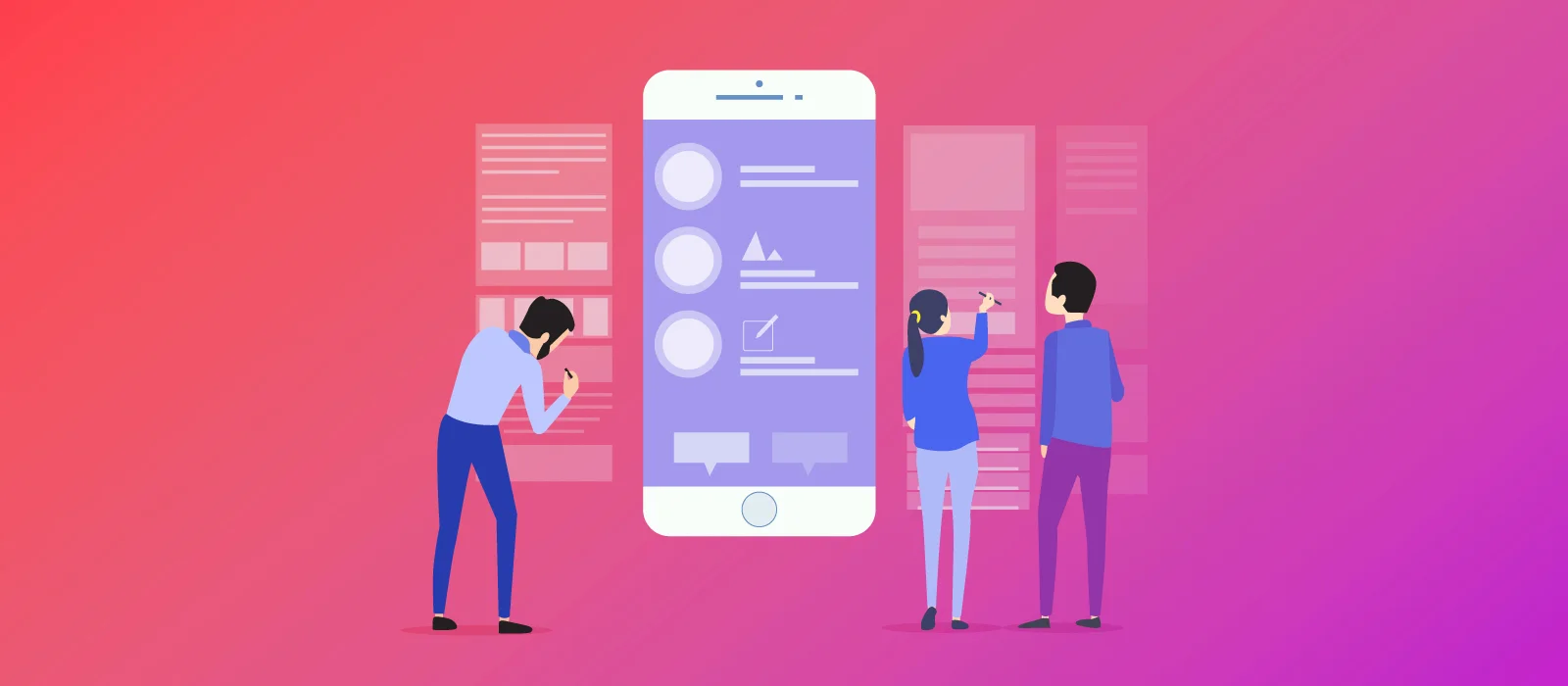UX UI Design Studio



When it comes to UX, the year 2017 saw quite a bit. The hottest buzzwords last year included smarter personalization, Artificial Intelligence (AI), and Virtual Reality (VR). Besides these, there was one term that stood out from the crowd— Digital disruption. After all, it’s next to impossible to reminisce 2017 without thinking about the infamous Bitcoin. The UX trends last year also saw an incredible rise in a minimalistic approach in terms of layouts. Wherever one looked, there were videos that partnered pixel-perfect illustrations. In addition to this, the animations we saw were extremely delightful, as well as functional, and gradients were very popular. Personalization, Gamification, and Conversational interfaces were also all the rage.
With 2017 seeing so much, it’s quite clear that last year was all about technology and interface design alike, and was nothing short of exciting. If you’re looking to know more about these trends, why not check out our blog on UX design trends in 2017?
Right until last year, people wondered what UX was really about. But while they wondering what it’s truly about, and second-guessing its lifespan, UX was slowly evolving.
With all that said, we can’t be more thrilled to announce that this year gave birth to UX 2.0! It’s brand new and is a better version of yesteryear’s UX. UX 2.0 comes with a number of new trends that can provide a frictionless experience, smarter personalization, and technology such as augmented reality, virtual reality, and voice assistance.
Without further ado, let’s delve into what you can expect from the newest, coolest kid on the block, UX 2.0:
In 2018, UX designers will be required to— and they should— understand more about the business they are designing for. The design field is maturing, and along with it, budgets are getting larger, which is why the design landscape is gradually becoming a lot more competitive, as well as complex. One of the latest UX trends of 2018 involves an accelerated shift from UX design to Product Design. For this very reason, the roles and responsibilities of designers will begin to grow, and the need for designers to understand more about design, as well as business strategy will become inevitable.
Unlike 2017, wherein UX designers struggled with entrepreneurs when it came down to adopting a design-first approach for a digital product. This however, will change this year— in fact, it has already begun to. UX designers have started to wear different hats— not just the design hat; UX design practices of 2018 also includes re-engineering, and not just redesigning. A simple reason lies behind this— UX designers should be improving people’s lives with design, but these designs should also help meet business goals. Trending UX will prompt designers to be more strategic about features, screens, and experiences they create. And so, it’s about time designers accept the fact that they aren’t just artists, but are also business persons— it’s for the best, really.
The popular apps of today and real-time social media experiences have made today’s consumers spoilt for choice, and have changed their expectations about how long it should take for products and services to deliver what they’re looking for. This is why, UX designers of 2018 will have to start designing for these consumers, who aren’t exactly the easiest lot to please. Let’s take a look at what these consumers look like:
Today, consumers are making decisions faster than ever, which is why they expect to be able to act on those decisions instantly— no waiting, whatsoever. Moreover, these consumers also expect brands to know what they need, and when they need it.
Thanks to the Internet, consumers have unfettered access to a wealth of information, and users have been taking much-informed decisions based on their research.
When people go online for information, they expect every experience to be tailored just for them. To make sure companies are truly there for their consumers, they must offer more than just customized products. It’s the shift from user experience to product experience.
With customer journeys becoming more and more fragmented, it’s now the responsibility of UX designers to ensure brands are telling a coherent story across all channels. It’s also vital for them to make sure these stories are convincing, interesting, and human. This is why, this year, UX designers have brought written content in the spotlight. 2017 marked the beginning of a new relationship— the collaboration of UX designers and copywriters. This cross-pollination will only continue to grow this year, as the term “UX writing”— one of the latest UX trends of 2018—starts to be used to describe not just a technique, but job titles too.
Browsing through a well-designed interface is just like reading a wonderful story, which is why every designer is basically a storyteller. Whether it’s designing a landing page, a product page, a signup form, or a chatbot— a story is told everywhere. So, forget modules, column grids, iconography, and all that jazz for some time; and begin thinking about the core of what you want to communicate to the user. What if you created a simple story outline using a text editor before jumping straight into a design software to create a wireframe? By stripping away all kinds of visual clutter, you’ll be able to better focus on the core message you are trying to communicate. When you’re going this ask yourself this question: Does the page still tell a cohesive, clear story even after all the styles have been removed? If your answer is yes, then you’re good to go!
As mentioned before, UX 2.0 brings with it the use of a number of technologies, such as voice assistance and VR; and for many designers, these technologies are in uncharted waters. However, as this is one of the latest UX trends of 2018, designers are required to adopt new approaches when it comes to designing, as well as effectively communicate these requirements to developers. It’s precisely for this reason that teamwork is gaining more importance in the world of UX design. Developers and designers will need to work extensively together in order to ensure that these new technologies are ready for adoption by the users. This is why, UXers will need to make sure that their skills are up for the challenge— designers who have knowledge of coding, will be the leaders of innovation in UX. Moreover, having knowledge of frontend development will streamline the collaboration process, and make it seamless.
Collaboration isn’t just of one type, however. It includes the following:
Real-time collaboration eliminates the time-consuming barriers formalities and closed iteration cycles came with, and this is something that is extremely valuable to remote teams. Google Docs was the first of this kind and was followed by Freehand by Invision, Figma, Mural.co, Stickies.io, Pixelboard, and Slack.
Git is a great system to keep track of changes and keep the work open to new ideas and explorations. Moreover, not having to sit and figure out what in the world “final_alt_v02_04.sketch” is, is sort of a blessing. Popular problem-solving tools include Folio, Abstract, Kactus, and Plant; but we can surely expect a larger variety next year.
You should note that collaboration isn’t limited to only live sketching and file management. The most significant opportunity collaboration brings with is the sharing of knowledge gained from research, discovery, and workshops. Great insights that are collected from users shouldn’t be left to die on a Google Doc. This year—although it can be quite challenging— creating a repository with the learning’s from a project, and making it accessible to all, will become extremely vital. As of now, WeWork is sharing research data internally with Polaris; Milanote lets you create boards to organize different kinds of data; but a robust, effective tool to collect and share data is still required.
With the growth of fragmented, less visible interfaces, branding is slowly starting to go beyond pixels— it’s now a lot more than how the brand looks and what it says. Non-pixel based experiences are encouraging designers to rethink a brand’s personality, actions, as well as signifiers— of the new UX trends of 2018.
VUI will play a major role in keeping users engaged, in this chaotic world that is full of distractions. The recent developments in natural language processing and machine learning, have ensured that VUI and chat bots are able to comprehend complex conversations and predict your responses.
This may seem shocking, this UX trend is making UI redundant. Screens will start to go away, and interactions will primarily take place via voice, gestures, glances, or even thought.
Trending UX design includes the heavy-use of artificial intelligence. These days, a number of people have started to experiment with AI, which is why we’ll see an upsurge in applications that will open doors for users to tech advancements. It’s hence advisable to learn the platform well, understand its limitations, and basically get your hands dirty. Every service we know of will add the label “AI-powered” to it. This could include AI that creates bodega vending machines; AI that controls your meetings; AI that checks on your pets and kids for you; as well as AI that could replace you at work. You probably haven’t noticed this, but there’s one thing that’s happening here— we’re using a buzzword without really knowing what it actually means. And so, to avoid this, here’s what you need to know:
Therefore, before attaching this new UX trend to your product or feature, ask yourself the following questions:
UX design, with a strong focus on accommodating emerging technologies, will dominate the user experience space in 2018. At the same time, enterprises will pay more attention to the evaluation of ideas, and then designing products that users need. For this reason, design thinking will find fame, and those who indulge in it will be the ones who want to create human-centred designs.

